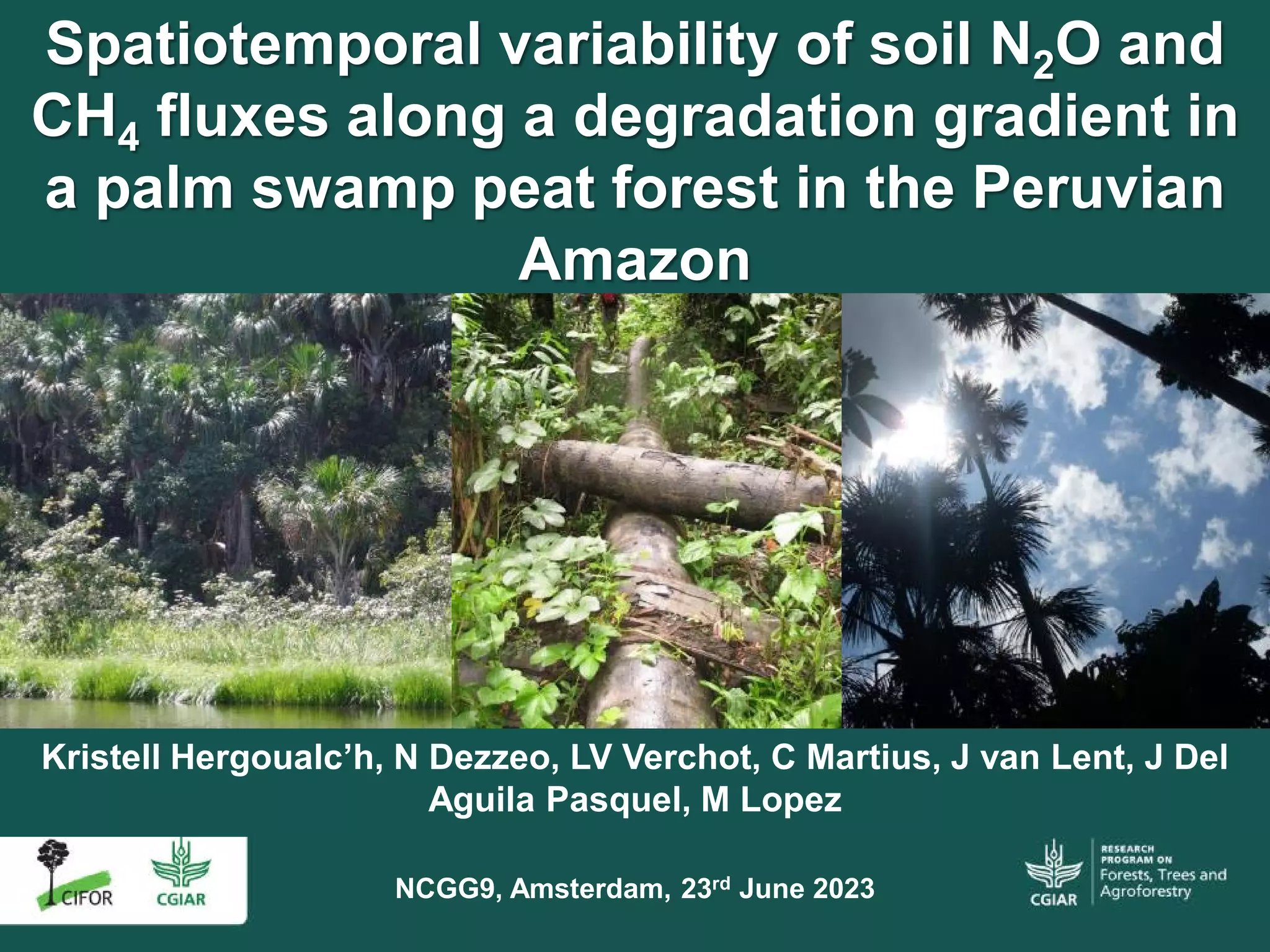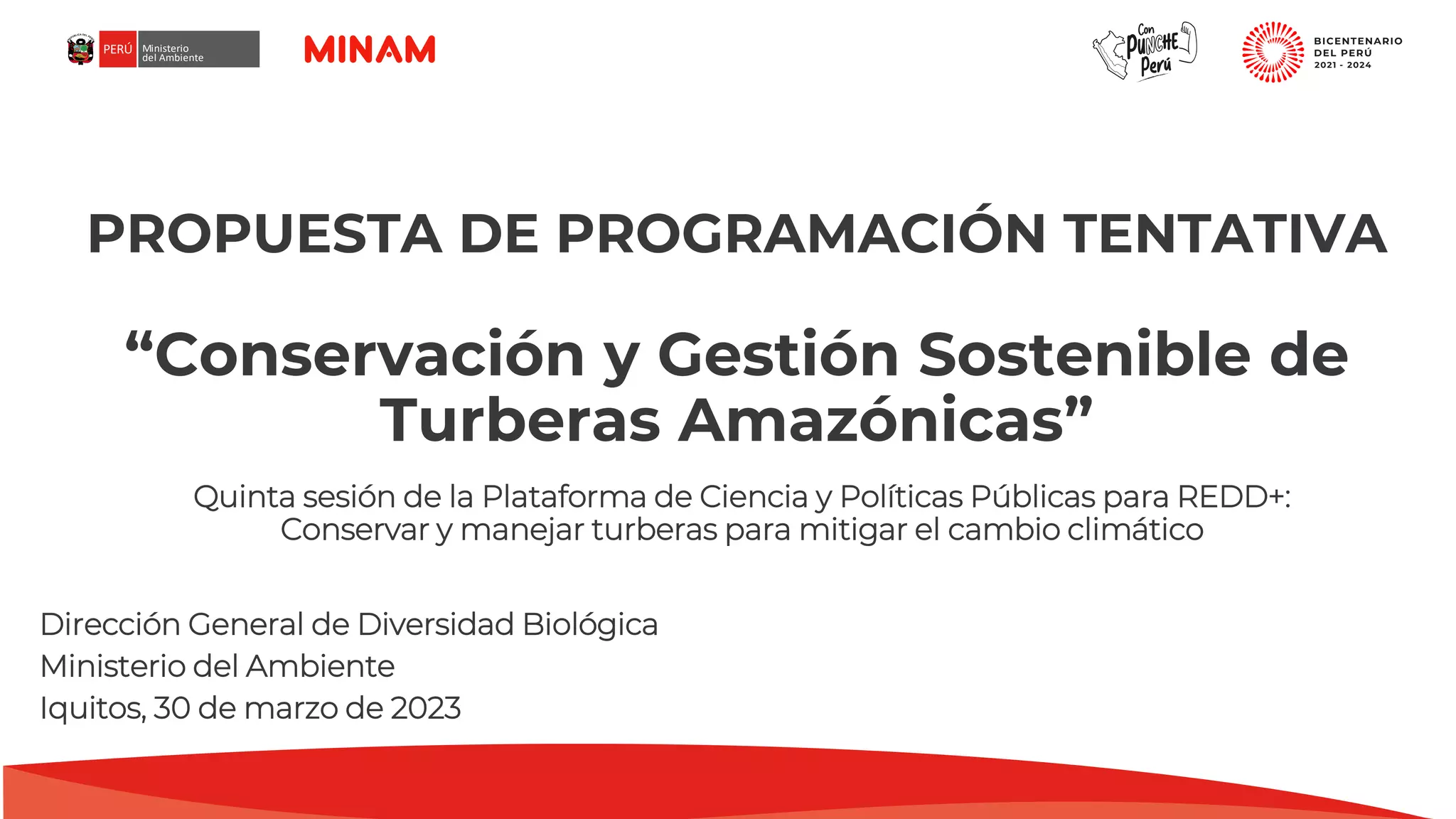
Mauritia flexuosa palm swamp, the prevailing Peruvian Amazon peatland ecosystem, is extensively threatened by degradation. The unsustainable practice of cutting whole palms for fruit extraction modifies forest's structure and composition and eventually alters peat‐derived greenhouse gas (GHG) emissions. We evaluated the spatiotemporal variability of soil N2O and CH4 fluxes and environmental controls along a palm swamp degradation gradient formed by one undegraded site (Intact), one moderately degraded site (mDeg) and one heavily degraded site (hDeg). Microscale variability differentiated hummocks supporting live or cut palms from surrounding hollows. Macroscale analysis considered structural changes in vegetation and soil microtopography as impacted by degradation. Variables were monitored monthly over 3 years to evaluate intra‐ and inter‐annual variability. Degradation induced microscale changes in N2O and CH4 emission trends and controls. Site‐scale average annual CH4 emissions were similar along the degradation gradient (225.6 ± 50.7, 160.5 ± 65.9 and 169.4 ± 20.7 kg C ha−1 year−1 at the Intact, mDeg and hDeg sites, respectively). Site‐scale average annual N2O emissions (kg N ha−1 year−1) were lower at the mDeg site (0.5 ± 0.1) than at the Intact (1.3 ± 0.6) and hDeg sites (1.1 ± 0.4), but the difference seemed linked to heterogeneous fluctuations in soil water‐filled pore space (WFPS) along the forest complex rather than to degradation. Monthly and annual emissions were mainly controlled by variations in WFPS, water table level (WT) and net nitrification for N2O; WT, air temperature and net nitrification for CH4. Site‐scale N2O emissions remained steady over years, whereas CH4 emissions rose exponentially with increased precipitation. While the minor impact of degradation on palm swamp peatland N2O and CH4 fluxes should be tested elsewhere, the evidenced large and variable CH4 emissions and significant N2O emissions call for improved modeling of GHG dynamics in tropical peatlands to test their response to climate changes.
Download:
 file
file

- Authors: Hergoualc'h, K., Dezzeo, N., Verchot, L.V., Martius, C., van Lent, J., del Aguila Pasquel, J., López Gonzales, M.
- Author Affiliation: Venezuelan Institute for Scientific Research, Center for International Tropical Agriculture, Wageningen University & Research, Instituto de Investigaciones de la Amazonia Peruana
- Subjects: greenhouse gas emissions, peatlands, nitrous oxide, swamps, methane
- Publication type: Journal Article, ISI
- Source: Global Change Biology 26(12): 7198-7216
- Year: 2020
- DOI: https://doi.org/10.1111/gcb.15354



















